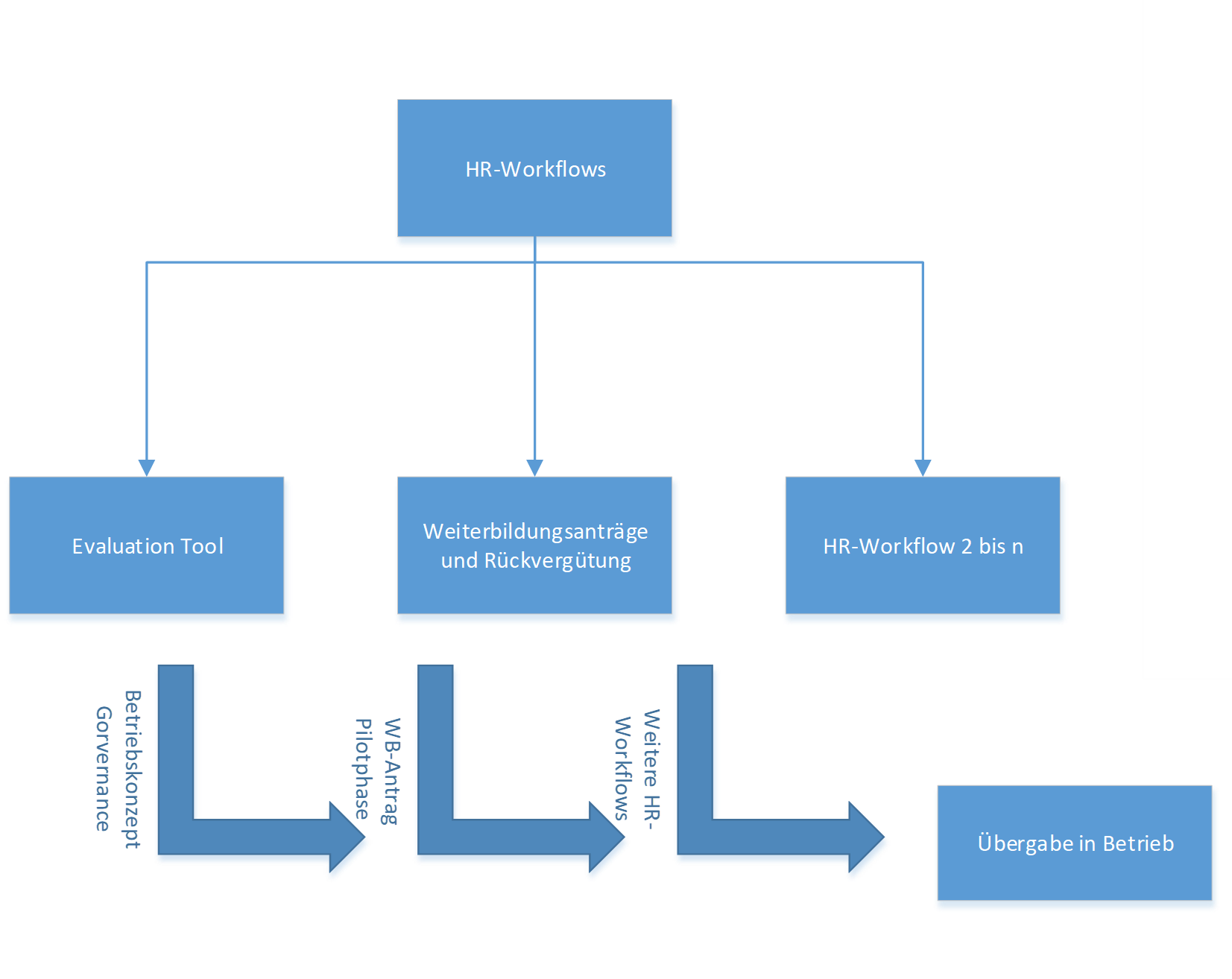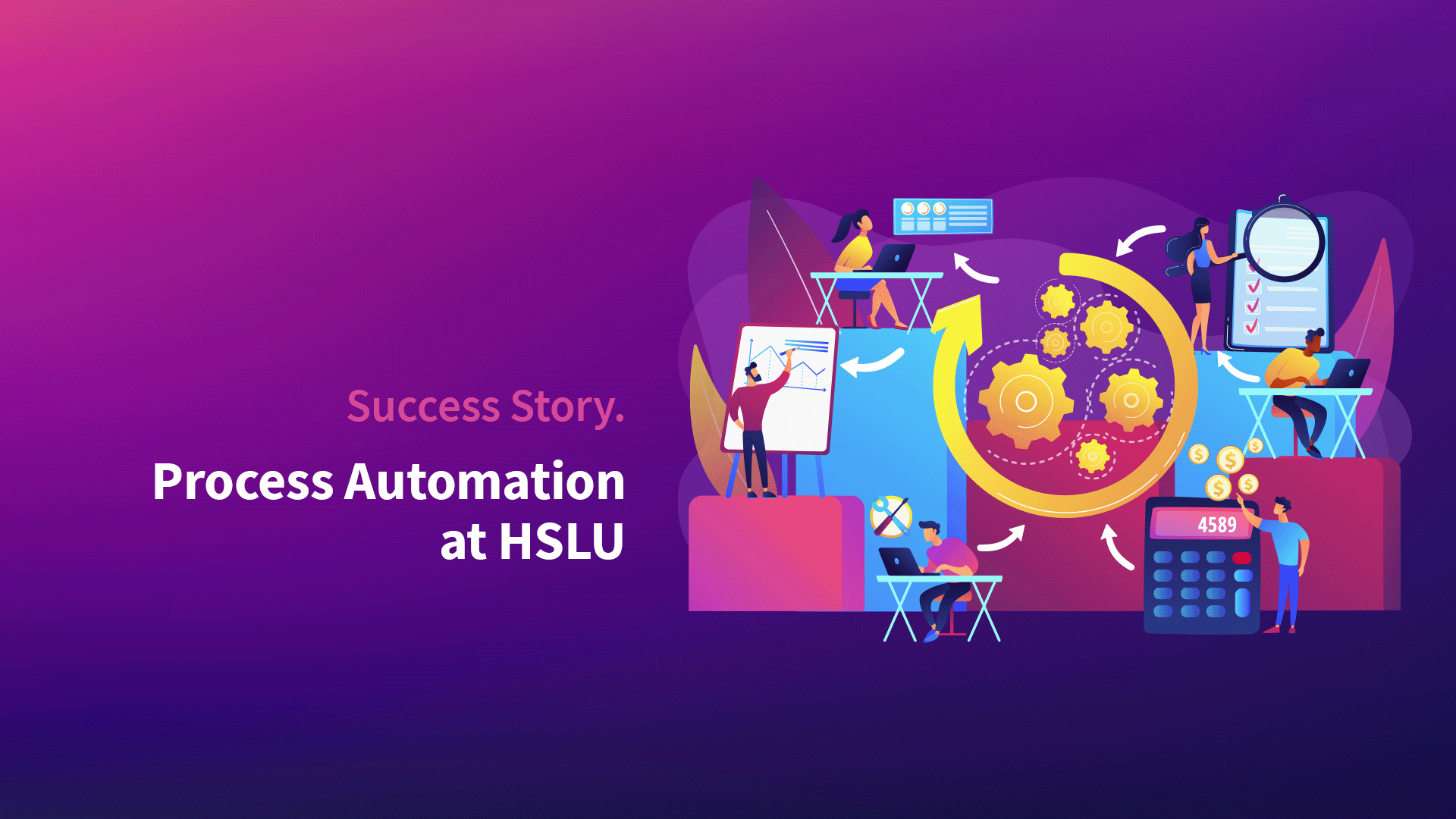How HSLU is digitalizing their processes with business process automation: Successes and challenges
In this business process automation case study, you’ll learn how HSLU conceptualized their automation project, where they started from and how they approached this initiative. The Lucerne University of Applied Sciences and Arts (HSLU), and its six different departments have decided to start actively shaping their digital future. Following this mission, they’ve began systematically digitalizing or automating their processes. Find out about the challenges and added-value they have gained from automating their first two processes!
If you need more info check out our blogpost about Business Process Automation.
The starting point of HSLU’s business process automation initiative
The Lucerne University of Applied Sciences and Arts consists of six departments, and is the largest educational institution in central Switzerland. The University of Applied Sciences and Arts unites the departments for Business, Information Technology, Social Work, Design and Art, and Music, all under one roof. Only in 2020, 7,789 students attended a bachelor’s or master’s degree programme at the HSLU. And 378 R&D projects hit the ground running!

Livio Frei
Lucerne University
In the lack of operational workflow tools, many processes were managed and monitored manually using forms created in Word, Excel or emails. The documents were partly passed on electronically, and in some cases even physically. As a result, it was difficult to check the status of pending orders and get an assessment of completed ones, among the different interface managers within the company.
In addition, cultural and organizational differences and the growing interdisciplinary collaboration only led to further challenges. Overall, the process handling was very time-consuming, the quality of results was poor, the lead time long, and the transparency and clarity fully insufficient. This was what created a real need for digital and automated processes. In a nutshell, the following pain-points were identified:
- Manual process handling
- Complex documentation through various channels such as emails, Excel and Word
- Lack of transparency and clarity
- Insufficient results quality
Video: Teaser video of the full webinar; Strategic introduction of business process automation in universities with Livio Frei
Goals of the business process automation initiative
In particular, the HSLU wanted to accomplish the following objectives:
- Simplify tracking for changes and status inquiry
- Implement an intuitive system that is easy to use
- Minimize processing times
- Reduce time required
- Improve process handling
Approach to business process automation
After reaching a decision to go for ADONIS Process Automation, a proof of concept was created together with BOC Group. The technical process harmonization and digitalization (process workflows) was implemented within 6 months. During this time, some basic preparation was also done by the University, such as the connection to surrounding systems or creation of document templates. The implemented workflows were tested and validated several times. An important factor was to involve end users in the process and train them before go-live.

Figure: Process automation workflow at the Lucerne University of Applied Sciences and Arts. Source: HSLU
Key steps of business process automation case study
1. Evaluate the process automation tool
As a public university, the HSLU is required to do a tender for major procurements of applications. For the assessment of a workflow-supported tool, the University of Lucerne has defined a list of criteria with the following requirements:
- Modelling according to the BPMN 2.0 standardPossibility to implement processes on their own
- Autonomy and independence from other applications
- IT and data security
- System stability
- Flexible application scenarios
2. Selection of suitable processes for automation/digitalization
In the course of the the process automation initiative, two HR processes have been identified – training request and reimbursement – that should be automated first. More information on the underlying process automation model can be found in this article.

Livio Frei
Lucerne University
3. Testing and roll-out
After the two processes were mapped out (modelled) in ADONIS BPM Suite, they were transformed into executable workflows using ADONIS Process Automation, and the corresponding forms were created and stored. Following this, the two processes were tested in a live environment and rolled out to daily operations. The two workflows are currently being continuously monitored and optimized in order to spot areas for improvement and bottlenecks at an early stage.

Livio Frei
Lucerne University
4. Backlog and prioritization of other relevant processes for automation/digitalization
At the same time, the process portfolio was analysed by the HR and other departments, such as Finance and IT Services, to identify further automation potentials. These, in turn, were identified and prioritized in more detail. The following free poster about process automation steps provides a visual overview of the criteria that can be used to identify processes for automation.
Lessons learned from the automation initiative
The Lucerne University of Applied Sciences and Arts has taken a long-term, interdisciplinary approach to automation, first launched in the Human Resources department. This has laid the groundwork for successful continuation of the digital transformation initiative. Not only has the infrastructure been put in place, but valuable knowledge and know-how have been built up internally too. After the successful implementation, some challenges have been identified that were not in focus initially, but in retrospect have become an essential part of the initiative’s success:
User management and directions:
The various departments do often have different hierarchy levels between the employees and their superiors. Taking these decision-making processes into account was a technical challenge.
Administrative pre-audits help:
The application is pre-screened by an office assistant before it is being sent to the decision-maker.
CO lines:
Some managerial positions are shared by two people (co-managers). The technical mapping has to be considered and solved accordingly.
Harmonization of processes:
Designing a harmonized process across six departments was a challenging task. Here, it’s all about process optimization and process alignment.
Effort and duration of preparations:
The preparation phase is important and generally more complex than the implementation.
Business Process automation results
The ADONIS process automation solution has been successfully implemented and both the training application and reimbursement processes have been successfully integrated into day-to-day operations. Further processes suitable for automation have been modelled and prioritized. The summary of achievements, resulting from the digitalization and automation of the two selected processes is:
- Cost savings of approx. 36,458 CHF per year
- Time savings of around 700 working hours per year
- 2/3 of all applications are completed within five days
- 3/4 of refund requests are completed within one day
- Significant quality improvement of the inputs
- Complete process transparency
Would you also like to calculate the savings and optimization potential of a workflow-supported process for yourself? With this free ROI Excel calculator you can calculate the return on investment (ROI) of process automation in just a few simple steps!
Get the full testimonial of the Lucerne University of Applied Sciences and Arts.






